These days, a lot of manufacturers just throw in a lot of terminology and jargon when a new car is launched and this can confuse buyers to no end. Some of these may sound very appealing, but may not be what a car buyer wants in his/her vehicle. A car buyer will be able to make a better decision if he/she is able to understand the differences between various components. Car makers and enthusiasts mention superchargers and turbochargers in the same breadth, but not many buyers may know the difference between the two. [CENTER] [ATTACH=CONFIG]n1937[/ATTACH]
[/CENTER]
Essentially turbochargers and superchargers are forced induction systems. They add significant power to an engine by forcing or compressing more air into the engine. The main difference between a turbocharger and supercharger is how they deliver the power.
A turbo sits on the exhaust manifold and relies on exhaust gases to spin one end of the turbo which in turn makes the compressor side spin and thereby forcing more air to enter the intake system creating air pressure. In a turbocharger, the exhaust gas is utilised efficiently to drive a turbine that spins an air compressor. This pushes extra air into the engine’s cylinders allowing them to burn more fuel each second and produce extra power. The turbine usually spins at 150,000 RPM, almost 30 times the engine speed.
A turbo is more efficient than a supercharger since the engine doesn’t need to work harder to power the turbo unlike in a supercharger. According to a post on carthrottle.com, a turbocharger can make upto 50% more power than what the ordinary engine is producing, but it does take a little while for the turbine to produce boost and this can result in turbo lag followed by the car lunging forward when it kicks into action. The size of the turbocharger can also impact power output. Smaller turbos create boost faster making the engine produce more power at lower RPMs. One instance where a turbocharger is particularly effective is at high altitudes where the air is thinner. Where a normally aspirated engine would struggle to pump air into the intake, a turbocharger would be unfazed in such a situation.
[U][B]Pros Of A Turbocharger[/B][/U]
[LIST]
[*]Significant increase in horsepower
[*]Allows smaller engines to produce much more power relative to their size
[*]Better fuel efficiency as smaller engines have less rotational and reciprocating mass and uses less fuel to idle.
[*]Higher efficiency as a turbocharger runs off energy that is usually lost in naturally aspirated engines through exhaust gases.
[/LIST] [B][U]Cons Of A Turbocharger[/U][/B]
[LIST]
[*]Turbochargers take time to spool up and provide boost.
[*]Extra power is only available within a certain RPM range. This is primarily because they are sized in such a way that only when a certain amount exhaust gas flows through them, they provide additional boost for the engine.
[*]Could cause loss of traction or instability when turbo spools up and there is a sudden surge of power
[*]Turbochargers get very hot and could take a toll on engine oil for cooling and lubrication
[/LIST] Unlike the turbocharger, the supercharger is attached to the engine and spins with the crankshaft, usually connected by a belt. When the crankshaft spins the supercharger, it forces more air into the engine. The increase in airflow will allows more fuel to be fed into the engine thus creating more power. Supercharger can add as much as 46% more horsepower, according to a post on carthrottle.com. Superchargers spin upto speed of 50,000 RPM. Like the turbocharger, a supercharger too would do well in high altitudes. Superchargers are mostly found in V8 engines.
[B][U]Pros Of A Supercharger[/U][/B]
[LIST]
[*]Adding a supercharger to any engine boosts power considerably.
[*]It does’t have any lag unlike turbocharger. Power delivery is immediate.
[*]Compared to turbochargers, superchargers can provide a good amount of power from lower down the RPM range.
[*]Easier to maintain than complex turbochargers.
[*]Cost effective way of increasing power.
[/LIST] [B][U]Cons Of A Supercharger[/U][/B]
[LIST]
[*]Less efficient than a turbocharger because it relies on engine power to produce more engine power.
[*]With a supercharger, the engine internals are exposed to higher pressures and temperatures and can affect longevity of the engine. Adding a supercharger will necessitate strengthening of engine components.
[/LIST] [CENTER] [ATTACH=CONFIG]n1938[/ATTACH]
[/CENTER]
Now if you think it’d be great to have both a turbo and supercharger on your engine for low and high-end performance, you’d not be wrong. In fact this is exactly what Volkswagen AG did back in 2005 at the Frankfurt Auto Show. Volkswagen took their 2.0-litre FSI engine and downsized it to 1.4-litres and added a ‘Twincharger’. This engine employs both a turbocharger and a supercharger to produce 14% more power and better fuel efficiency than the engine it replaced. At low engine speeds (from tick over to 2,400 RPM), the mechanical supercharger driven at 1.5 times the crankshaft speed increases low-end torque. The turbocharger then kicks in at middle revs and the engine map disengages the clutch-controlled supercharger above 3,500 RPM. But these engines are expensive to produce and are not available in our country yet.
But if given a choice of going turbocharged or supercharged, I’d prefer the former. Both producers tons of power but the power delivery and torque from a turbocharger feels way better than a supercharged engine. For me, the hissing sound produced by a turbocharged engine sounds way more sweeter that the wail a supercharged engine makes.
Here's a look at how a turbocharger and supercharger work
[video=youtube_share;zenMEj0cAC4]https://youtu.be/zenMEj0cAC4[/video]
[video=youtube_share;VHXYoY8BvoE]https://youtu.be/VHXYoY8BvoE[/video]

 View More Comments
View More Comments
 Add your Comment
Submit Comment
Add your Comment
Submit Comment Asked by Nagaraj Maddodi
8 Answers
Asked by Nagaraj Maddodi
8 Answers
 Asked by Knight Rider
8 Answers
Asked by Knight Rider
8 Answers
 Asked by Radha Krishna
56 Answers
Asked by Radha Krishna
56 Answers
 Asked by Tarun Sundar
118 Answers
Asked by Tarun Sundar
118 Answers
 Asked by Balamuralikrishnan
4 Answers
Asked by Balamuralikrishnan
4 Answers
 Asked by Arc Academics
4 Answers
Asked by Arc Academics
4 Answers
 Asked by Mohit Datasec
15 Answers
Asked by Mohit Datasec
15 Answers
 Asked by Shyamal Deka
4 Answers
Asked by Shyamal Deka
4 Answers
 Asked by Amit Rai
3 Answers
Asked by Amit Rai
3 Answers
 Asked by Jiten Sarma
4 Answers
Asked by Jiten Sarma
4 Answers
 Basic Seat care27 Jun, 2014 | By Team ZigWheels
Basic Seat care27 Jun, 2014 | By Team ZigWheels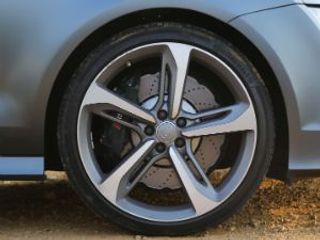 Car Care Guide: Brakes26 Jun, 2014 | By Team ZigWheels
Car Care Guide: Brakes26 Jun, 2014 | By Team ZigWheels Getting the most from your Engine oil27 Jun, 2014 | By Team ZigWheels
Getting the most from your Engine oil27 Jun, 2014 | By Team ZigWheels Windscreen and Window care27 Jun, 2014 | By Team ZigWheels
Windscreen and Window care27 Jun, 2014 | By Team ZigWheels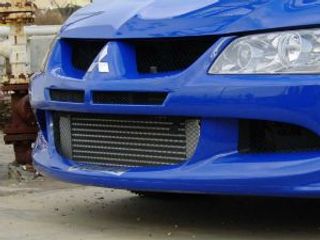 Tips and Tricks to Maintain Car Cooling Systems5 Sep, 2014 | By Team ZigWheels
Tips and Tricks to Maintain Car Cooling Systems5 Sep, 2014 | By Team ZigWheels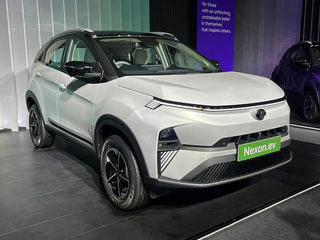 Reserve The 2023 Tata Nexon EV Facelift From Today!9 Sep, 2023 | By Team ZigWheels
Reserve The 2023 Tata Nexon EV Facelift From Today!9 Sep, 2023 | By Team ZigWheels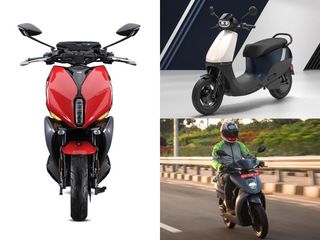 World EV Day 2023: All The Electric Two-wheeler Launching This Year Itself9 Sep, 2023 | By Team ZigWheels
World EV Day 2023: All The Electric Two-wheeler Launching This Year Itself9 Sep, 2023 | By Team ZigWheels These Are Top Automotive Headlines Of The Week9 Sep, 2023 | By Team ZigWheels
These Are Top Automotive Headlines Of The Week9 Sep, 2023 | By Team ZigWheels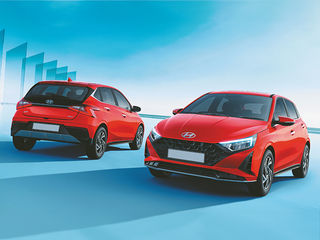 Here’s What The New Base Era Variant Of The 2023 Hyundai i20 Facelift Packs10 Sep, 2023 | By Team ZigWheels
Here’s What The New Base Era Variant Of The 2023 Hyundai i20 Facelift Packs10 Sep, 2023 | By Team ZigWheels Get Ready For The Four-cylinder 400cc Screamer From Kawasaki10 Sep, 2023 | By Team ZigWheels
Get Ready For The Four-cylinder 400cc Screamer From Kawasaki10 Sep, 2023 | By Team ZigWheels


